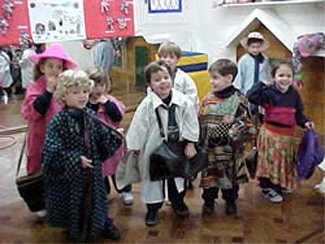Psychologists of the UAB detect emotional upheavals in children

This study is part of a wider research aimed at preventing and detecting emotional and behavioural disorders in the population of children aged between 3 and 6 in our country. This is a recent concern and studies focused on this age group show that many of the problems and disorders that are found in later life can be traced to this time of life. The aim of this study is the analysis of psychopathological disorders in pre-school age children reported by parents and teachers.
The study was undertaken in two geographical areas, one urban (the town of Moncada) and one rural (districts of Ribera d'Ebre and Priorat). The population under study was 1,104 children (56.67% boys; 43.32% girls). Detection was carried out using the "Early Childhood Inventory" scale (ECI-4) (Gadow & Saprafkin, 1997) according to the diagnostic criteria DSM-IV. The results show that 32.7 % of children, according to parent's statements, suffer some type of psychopathological problem, while teachers gave the figure as 46.7%. Most of the problems were more prevalent in the urban area rather than in the rural area (30.6 % versus 20.3%). The most prevalent disorders in both areas were anxiety and behavioural disorder, while the least prevalent were mood disorders and spectral autism.
Additionally, in the reports provided by the parents there is no gender difference in the reporting of the various disorders, while in the reports provided by the teachers there were significant gender differences. In conclusion, we can say that the results of this study show that there are some differences in the prevalence of psychopathological disorders in pre-school age children between the rural and urban areas of Catalonia.
References
Article: Parents and teachers reports of DSM-IV psychopathological symptoms in preschool children, Jane, MC; Canals, J; Ballespi, S; Vinas, F; Esparo, G; Domenech, E SOCIAL PSYCHIATRY AND PSYCHIATRIC EPIDEMIOLOGY, 41 (5):386-393 MAY 2006.


